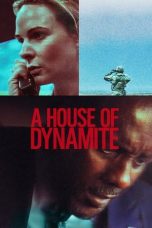The Boy in the Striped Pyjamas (2008) Film Review: A Heartbreaking Tale of Innocence and Tragedy
The Boy in the Striped Pyjamas, directed by Mark Herman and based on the novel by John Boyne, is a 2008 film that offers a poignant and sobering look at the Holocaust through the eyes of a child. Known for its emotional depth and powerful storytelling, the film remains a significant work in historical drama.
Plot Summary
Set during World War II, The Boy in the Striped Pyjamas follows the story of an eight-year-old boy named Bruno (played by Asa Butterfield). Bruno’s father, Ralph (David Thewlis), is a high-ranking officer in the Nazi regime, and the family relocates to a remote house near a concentration camp due to his father’s new assignment.
Bruno, feeling isolated and confused in his new environment, begins to explore the area around his new home. His adventures lead him to the fence of the concentration camp, where he befriends a boy named Shmuel (Jack Scanlon), who is imprisoned and wears striped pajamas.
As their friendship develops, Bruno remains unaware of the true nature of Shmuel’s situation and the horrors of the camp. The film builds to a tragic climax as Bruno’s innocent quest for understanding collides with the brutal reality of the Holocaust.
Key Themes and Symbolism
- Innocence and Ignorance: The film explores the theme of innocence through Bruno’s character. His naivety and lack of understanding about the world around him highlight the stark contrast between childhood innocence and the harsh realities of war and prejudice.
- Friendship Across Boundaries: The friendship between Bruno and Shmuel transcends the physical and ideological barriers created by the war. Their bond serves as a powerful symbol of human connection and the possibility of empathy amidst hatred.
- The Impact of War on Children: The film illustrates the profound impact of war on children, both in terms of the direct consequences of violence and the emotional toll of separation from loved ones and normalcy.
- The Contrast of Worlds: The stark contrast between Bruno’s sheltered life and Shmuel’s imprisonment underscores the disparity between the innocence of childhood and the horrors of war. The physical barrier of the fence symbolizes the ideological and moral divides that separate individuals in times of conflict.
Character Analysis
- Bruno (Asa Butterfield): Asa Butterfield’s portrayal of Bruno captures the character’s curiosity, innocence, and eventual confusion. Bruno’s journey from innocence to a painful realization underscores the film’s emotional impact.
- Shmuel (Jack Scanlon): Jack Scanlon’s performance as Shmuel is both poignant and restrained. Shmuel’s quiet strength and longing for normalcy provide a counterpoint to Bruno’s innocent exploration and highlight the film’s exploration of friendship and suffering.
- Ralph (David Thewlis): David Thewlis’s portrayal of Ralph, Bruno’s father, adds depth to the film’s exploration of the complexities of loyalty, duty, and the moral dilemmas faced by individuals in positions of power.
- Elsa (Vera Farmiga): Vera Farmiga’s role as Elsa, Bruno’s mother, reflects the emotional strain and moral conflict faced by those who are complicit in or affected by the atrocities of war.
Cinematography and Direction
Mark Herman’s direction is marked by its sensitivity and restraint. The film’s cinematography, by Benoît Delhomme, captures the contrasting worlds of Bruno and Shmuel with a focus on the stark and often oppressive atmosphere of the concentration camp and the innocence of Bruno’s home life.
The pacing of the film allows for a gradual buildup of tension and emotional depth, culminating in a powerful and heartbreaking climax. Herman’s direction ensures that the film’s themes are conveyed with both subtlety and impact.
Music
The film’s score, composed by James Horner, complements its emotional and dramatic elements. The music adds to the film’s atmosphere, enhancing the poignancy of the narrative and contributing to the overall impact of the story.
Reception and Impact
The Boy in the Striped Pyjamas received generally positive reviews from critics and audiences, praised for its emotional depth, performances, and portrayal of a sensitive subject. The film has been noted for its ability to convey the horrors of the Holocaust through a child’s perspective, offering a unique and impactful take on the historical drama genre.
The film’s impact extends to its contribution to discussions about the Holocaust, childhood innocence, and the human capacity for empathy. It remains a significant work in the genre and continues to be a powerful and moving experience for viewers.
Availability on Streaming Services
For viewers in the United States, The Boy in the Striped Pyjamas (2008) is available on several platforms:
- Amazon Prime Video: Available for rent or purchase.
- Apple iTunes: Available for rent or purchase.
- Google Play Movies: Available for rent or purchase.
- Hulu: Available for streaming with a subscription.
Conclusion
The Boy in the Striped Pyjamas (2008) is a poignant and heart-wrenching film that offers a unique perspective on the Holocaust through the eyes of a child. Mark Herman’s direction, combined with powerful performances by Asa Butterfield and Jack Scanlon, creates a moving and impactful narrative. The film’s exploration of innocence, friendship, and the horrors of war makes it a significant and memorable work in historical cinema.
- The Boy in the Striped Pyjamas 2008 review
- Mark Herman film analysis
- Holocaust films for children
- The Boy in the Striped Pyjamas streaming services
- Watch The Boy in the Striped Pyjamas online
- Historical drama movies
- The Boy in the Striped Pyjamas plot summary
- Asa Butterfield performance
- Emotional impact of The Boy in the Striped Pyjamas
















